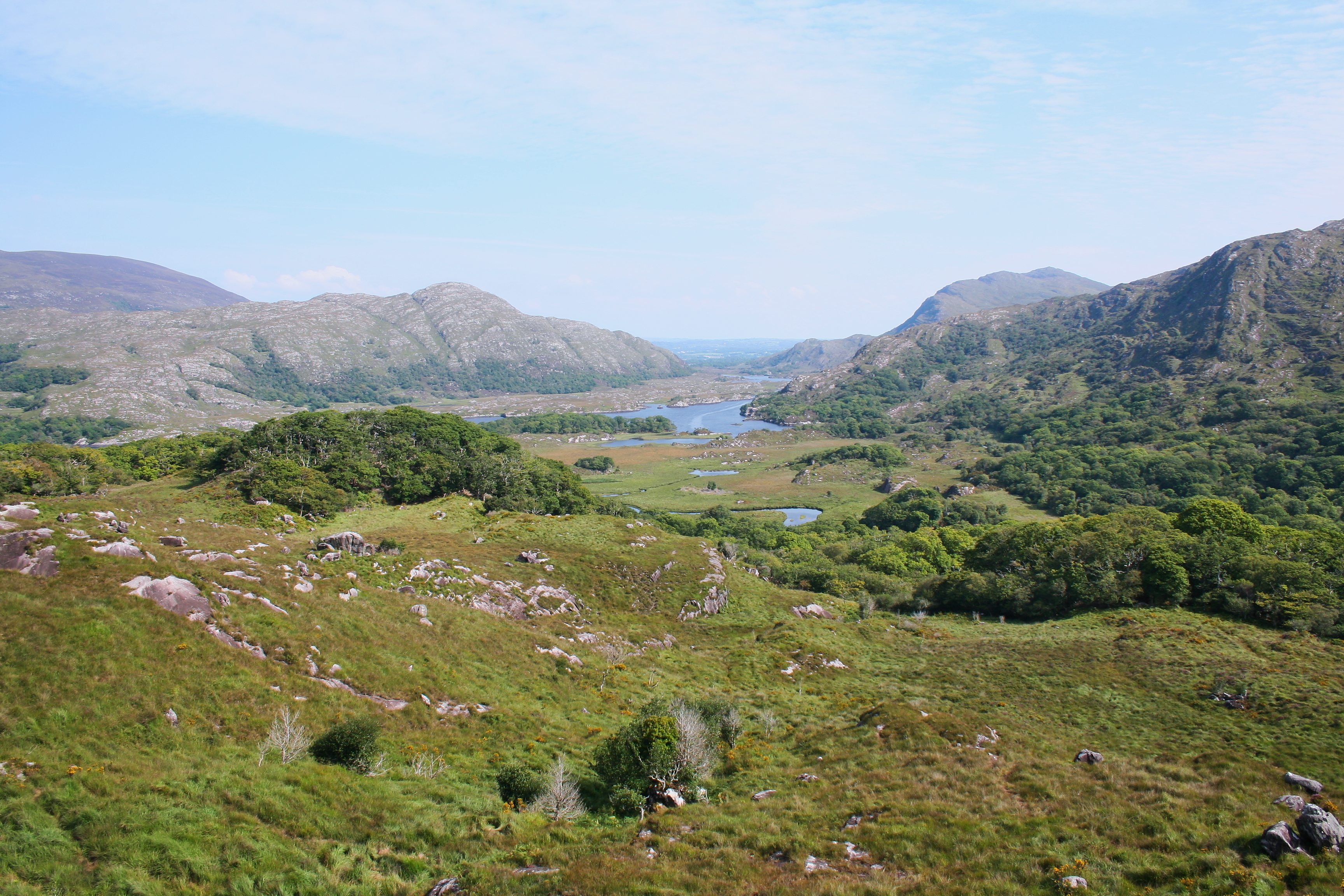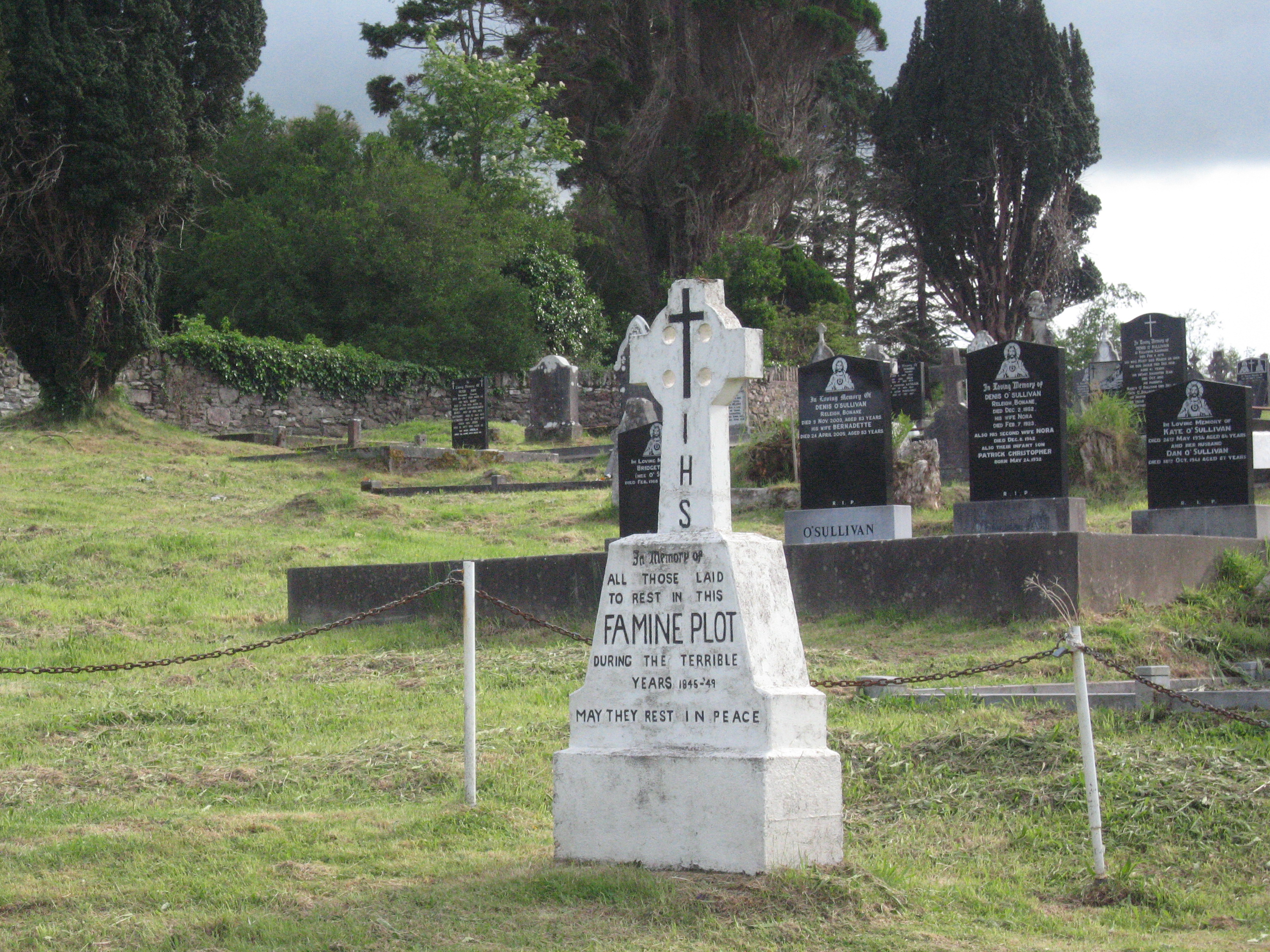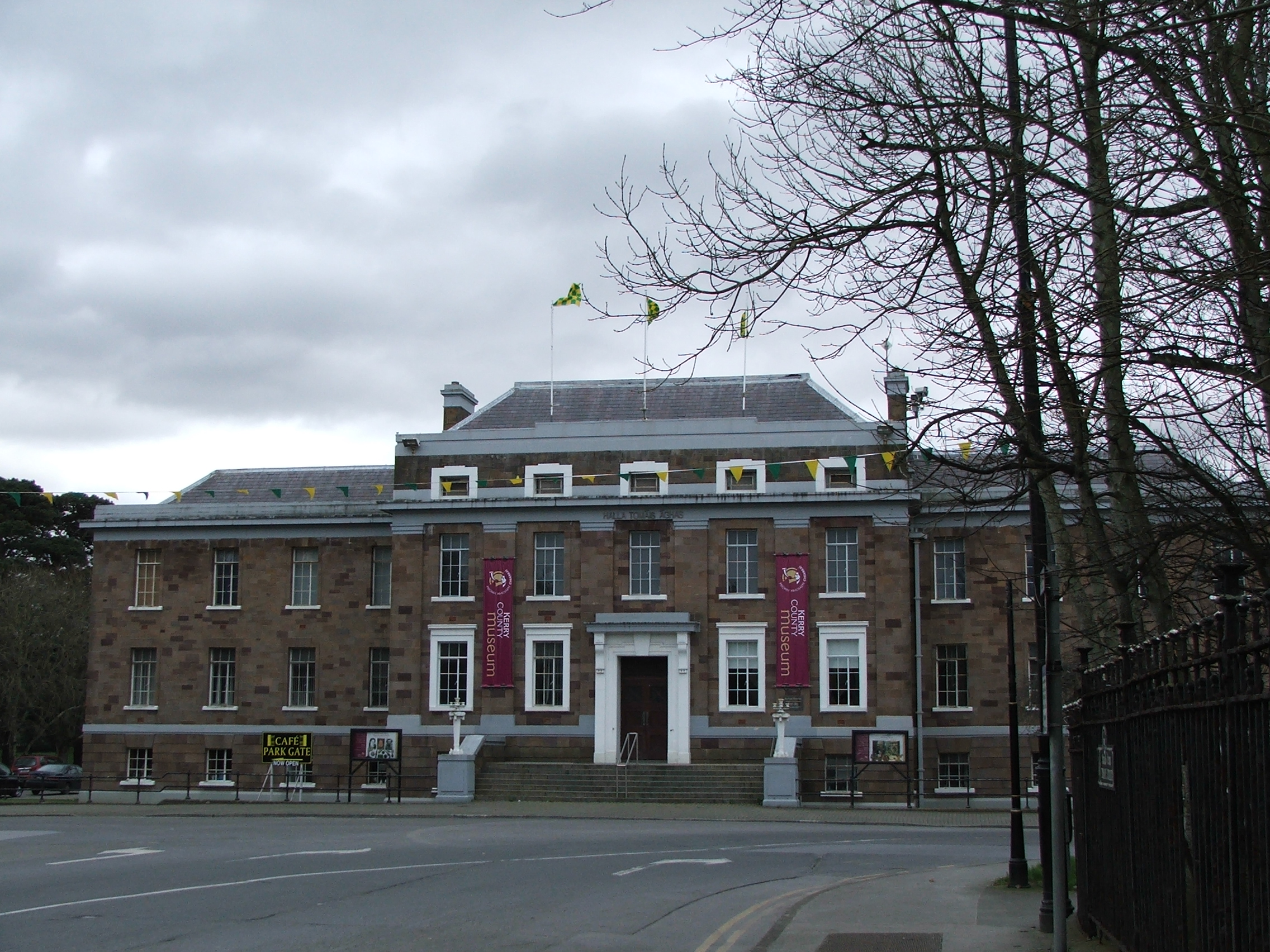|
Sneem
Sneem () is a village situated on the Iveragh Peninsula (part of the Ring of Kerry), in County Kerry, in the southwest of Ireland. It lies on the estuary of the River Sneem. National route N70 runs through the town. While the 2016 census recorded a population of 288 people, Sneem is located in tourist area and the population increases during the summer months. Name The Irish village name ga, An tSnaidhm means "the knot" in English. Several explanations of the name have been offered: *One is that a knot-like swirling is said to take place where the River Sneem meets the currents of Kenmare Bay in the estuary, just below the village. *Another notes that Sneem village comprises two squares, North and South. A bridge in the middle of the village, viewed from overhead, acts as a knot between the two squares. *A less common explanation is that Sneem is the knot in the scenic Ring of Kerry. History ''A Topographical Dictionary of Ireland'', published by Samuel Lewis in 1837, state ... [...More Info...] [...Related Items...] OR: [Wikipedia] [Google] [Baidu] |
Steve Casey
Stephen Casey (4 December 1908 – 10 January 1987) was an Irish sport rower and world champion professional wrestler. He was the second Irish wrestler, after Danno O'Mahoney, to become a world champion. Rowing Casey was the eldest of seven sons and three daughters of Mike Casey, a bare-knuckle boxer and Brigid (nee Sullivan). Steve Casey rowed in the Sneem senior crew with his father and the O'Connor Brothers. The Sneem/Casey Team won the Tug-O-War Munster Championship in 1932. Casey went on to win the Salter Challenge Cup with his brothers during 1930 to 1933. In 1936, he became the All-England Rowing Champion with his brothers Paddy, Tom and Mick. In the same year, the Caseys qualified for the Olympics in rowing but were disqualified for Steve and Paddy being professional wrestlers because Steve had wrestled two professional matches before the Olympics. Professional wrestling In 1935, Steve and his brother Paddy Casey joined the British Amateur Wrestling Team. Steve Ca ... [...More Info...] [...Related Items...] OR: [Wikipedia] [Google] [Baidu] |
Cearbhall Ó Dálaigh
Cearbhall Ó Dálaigh (; 12 February 1911 – 21 March 1978) was an Irish Fianna Fáil politician, judge and barrister who served as the fifth president of Ireland from December 1974 to October 1976. His birth name was registered in English as ''Carroll O'Daly'', which he used during his legal career and which is recorded by some publications. He served as a Judge of the European Court of Justice from 1973 to 1974, Chief Justice of Ireland from 1961 to 1973, a Judge of the Supreme Court from 1953 to 1973, and Attorney General of Ireland from 1946 to 1948 and from 1951 to 1953. Early life Cearbhall Ó Dálaigh, one of four children, was born on 12 February 1911, in Bray, County Wicklow. His father, Richard O'Daly, was a fishmonger with little interest in politics. His mother was Una Thornton. Ó Dálaigh had an elder brother, Aonghus, and two younger sisters, Úna and Nuala. He went to St. Cronan's Boys National School, and later to Synge Street CBS in Dublin. While attendi ... [...More Info...] [...Related Items...] OR: [Wikipedia] [Google] [Baidu] |
Derryquin Castle
Derryquin Castle was an 18th-century stone-built country house, now demolished, in the Parknasilla estate in Sneem, County Kerry in the Republic of Ireland. It stood on the Ring of Kerry route some 40 km (25 miles) south-west of Killarney. Designed by local architect James Franklin Fuller, the house comprised a three storey main block with a four storey octagonal tower rising through the centre and a two storey, partly curved wing. The building was equipped with battlements and machicolations. History The Parknasilla estate was acquired by the Very Reverend James Bland, an Englishman who had moved to Ireland in 1692 as chaplain to Henry Sydney, 1st Earl of Romney, the newly appointed Lord Lieutenant of Ireland. Bland, the son of John Bland of Sedbergh, entered St John's College, Cambridge in 1684 (BA 1687, MA 1703) and became Archdeacon of Limerick on 1 June 1693, resigned in 1705, and became Archdeacon of Aghadoe on 12 July that year. He became Treasurer of Ardfert in 1711 ... [...More Info...] [...Related Items...] OR: [Wikipedia] [Google] [Baidu] |
Iveragh Peninsula
The Iveragh Peninsula () is located in County Kerry in Ireland. It is the largest peninsula in southwestern Ireland. A mountain range, the MacGillycuddy's Reeks, lies in the centre of the peninsula. Carrauntoohil, its highest mountain, is also the highest peak in Ireland. Geography Towns on the peninsula include Killorglin, Cahersiveen, Ballinskelligs, Portmagee, Waterville, Caherdaniel, Sneem and Kenmare. The Ring of Kerry, a popular tourist trail, circles the coastlines as well as the Skellig Ring, beginning and ending at Killarney, just east of the peninsula. Valentia Island lies off the northwestern tip of the peninsula. It is connected with the peninsula by a bridge at Portmagee village, but it can also be reached by ferry crossing between Renard Point on the mainland and Knightstown on the island. The Skellig Islands lie about 12 kilometres (7.5 statute miles or 6.4 nautical miles) off the west coast and are known for their monastic buildings an ... [...More Info...] [...Related Items...] OR: [Wikipedia] [Google] [Baidu] |
Ring Of Kerry
The Ring of Kerry ( ga, Mórchuaird Chiarraí) is a circular tourist route in County Kerry, south-western Ireland. Clockwise from Killarney it follows the N71 to Kenmare, then the N70 around the Iveragh Peninsula to Killorglin – passing through Sneem, Waterville, Cahersiveen, and Glenbeigh – before returning to Killarney via the N72. Popular points include Muckross House (near Killarney), Staigue stone fort and Derrynane House, home of Daniel O'Connell. Just south of Killarney, Ross Castle, Lough Leane, and Ladies View (a panoramic viewpoint), all located within Killarney National Park, are major attractions located along the Ring. A more complete list of major attractions along the Ring of Kerry includes: Gap of Dunloe, Bog Village, Dunloe Ogham Stones, Kerry Woollen Mills, Rossbeigh Beach, Cahersiveen Heritage Centre, Derrynane House, Skellig Experience, Staigue Fort, Kenmare Lace, Moll's Gap, Ballymalis Castle, Ladies View, Torc Waterfall, Muckross ... [...More Info...] [...Related Items...] OR: [Wikipedia] [Google] [Baidu] |
List Of Irish State Funerals
State funerals () in Ireland have taken place on the following occasions since 1922. List State funerals declined and refused Former Taoisigh John A. Costello and Liam Cosgrave did not receive state funerals, at the request of their respective families. Similarly, a 1948 press release at the repatriation by LÉ ''Macha'' of the remains of W. B. Yeats, who had died in France in 1939, stated "The Government was, of course, desirous to accord full State honours in connection with the funeral, but considered it proper to respect the wishes of the poet's relatives." A state funeral was offered after the assassination of UK ambassador Christopher Ewart-Biggs in 1976; his widow agreed instead to a memorial service. There was minimal official support for the 1970 reburial of men killed in India in the 1920 Connaught Rangers Mutiny. Arguments against a state funeral were that the 1966 Casement funeral not a precedent but rather symbolic of all who died abroad for Ireland; that the ... [...More Info...] [...Related Items...] OR: [Wikipedia] [Google] [Baidu] |
James Franklin Fuller
James Franklin Fuller (1835–1924) was an Irish actor, architect and novelist. Life Fuller was born at Nedanone,James Franklin Fuller: Omniana: the autobiography of an Irish octogenarian. London, Smith, Elder & Co (1916) County Kerry, the only son of Thomas Harnett Fuller of Glashnacree, County Kerry, by his first wife, Frances Diana, a daughter of Francis Christopher Bland of Derryquin Castle. He was educated in Blackrock, County Cork, and Dublin. In 1850 he went to London where he qualified as an architect, and later moved to Manchester. In 1862 he became a district architect under the Board of Ecclesiastical Commissioners in Ireland. In 1869, after the Church of Ireland was disestablished, he set up his own practice in Dublin. Two years later he became architect to the Representative Church Body and shortly afterwards was appointed architect to St. Patrick's Cathedral, as well as to a number of other institutions. He ran a busy, though, according to his memoirs, uncon ... [...More Info...] [...Related Items...] OR: [Wikipedia] [Google] [Baidu] |
N70 Road (Ireland)
The N70 road is a national secondary road in Ireland. It comprises most of the Ring of Kerry. Route (N70 ''Killarney Road'' at Kenmare) – Sneem – Castlecove – Caherdaniel – Waterville – Cahersiveen – Killorglin – ( N72) – Milltown – Castlemaine – ( N86) – Tralee (At Camp on N22/ N69 Tralee Bypass) . Quality of road N70 is mostly of poor quality single carriageway road, with many sections are bending or narrow especially from Castlemaine to Tralee and also from Waterville to Kenmare. There is only a short good sections. Upgrade and Improvement * In 2013, a new 750m of dual carriageway near Tralee was opening joining at roundabout at N22, as part of new 8 km dual carriageway east Tralee bypass which also joined N21 and N69. * In 2019, a new 3.5 km road between Milltown and Killorglin was opened. The new road is widened with a climbing lane. It replaced the dangerous bends on old section from Knoc ... [...More Info...] [...Related Items...] OR: [Wikipedia] [Google] [Baidu] |
Kenmare
Kenmare () is a small town in the south of County Kerry, Ireland. The name Kenmare is the Anglicisation, anglicised form of ''Ceann Mara'', meaning "head of the sea", referring to the head of Kenmare Bay. Location Kenmare is located at the head of Kenmare Bay (where it reaches the farthest inland), sometimes called the Kenmare River, where the Roughty River (''An Ruachtach'') flows into the sea, and at the junction of the Iveragh Peninsula and the Beara Peninsula. The traditional Irish name of the bay was ''Inbhear Scéine'' from the Insular Celtic languages, Celtic ''Aber and Inver as place-name elements, inver'', which is recorded in the 11th Century narrative ''Lebor Gabála Érenn'' as the arrival point of the Irish mythology, mythological Irish ancestor Partholón. It is also located near the MacGillycuddy's Reeks, Mangerton Mountain and Caha Mountains and is a popular hillwalking destination. Nearby towns and villages are Tuosist, Ardgroom, Glengarriff, Kilgarvan, Killarne ... [...More Info...] [...Related Items...] OR: [Wikipedia] [Google] [Baidu] |
Destruction Of Irish Country Houses (1919–1923)
The destruction of country houses in Ireland was a phenomenon of the Irish revolutionary period (1919–1923), which saw at least 275 country houses deliberately burned down, blown up, or otherwise destroyed by the Irish Republican Army (IRA). The vast majority of the houses, known in Ireland as big houses, belonged to the Anglo-Irish upper class known as the Protestant Ascendancy. The houses of some Roman Catholic unionists, suspected informers, and members or supporters of the new Irish Free State government were also targeted. Although the practice by the IRA of destroying country houses began in the Irish War of Independence, most of the buildings were destroyed during the Irish Civil War (1922–23). Today, most of the targeted buildings are in ruins or have been demolished. Some were restored by their owners, albeit often smaller in size, or were later rebuilt and re-purposed. The Big House as a target By the start of the Irish revolutionary period in 1919, the Big House ha ... [...More Info...] [...Related Items...] OR: [Wikipedia] [Google] [Baidu] |
Kerry County Council
Kerry County Council ( ga, Comhairle Contae Chiarraí) is the authority responsible for local government in County Kerry, Ireland. As a county council, it is governed by the Local Government Act 2001. The council is responsible for housing and community, roads and transportation, urban planning and development, amenity and culture, and environment. The council has 33 elected members. Elections are held every five years and are by single transferable vote. The head of the council has the title of Cathaoirleach (Chairperson). The county administration is headed by a Chief Executive, Moira Murrell. The county town is Tralee. History 1898 to 1922 Following the independence of the Irish Free State, responsibility for local government was taken by the new government. Kerry County Council was created by the Local Government (Ireland) Act 1898, legislation passed by the Parliament of the United Kingdom, of which Ireland formed a part at that time. The 1898 act introduced elected cou ... [...More Info...] [...Related Items...] OR: [Wikipedia] [Google] [Baidu] |
President Of Ireland
The president of Ireland ( ga, Uachtarán na hÉireann) is the head of state of Ireland and the supreme commander of the Irish Defence Forces. The president holds office for seven years, and can be elected for a maximum of two terms.Constitution of Ireland: Article 12.3 The president is elected directly by the people, although there is no poll if only one candidate is nominated, which has occurred on six occasions to date. The presidency is largely a ceremonial office, but the president does exercise certain limited powers with absolute discretion. The president acts as a representative of the Irish state and guardian of the constitution. The president's official residence is in Phoenix Park, Dublin. The office was established by the Constitution of Ireland in 1937. The first president assumed office in 1938, and became recognised internationally as head of state in 1949 after the coming into effect of the Republic of Ireland Act. The current president is Michael D. Higg ... [...More Info...] [...Related Items...] OR: [Wikipedia] [Google] [Baidu] |


.jpg)



